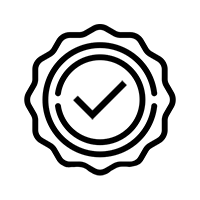ANSI Z87.1 is a standard developed by the American National Standards Institute (ANSI) focusing on occupational and educational personal eye and face protection devices. It sets criteria for the design, construction, testing, and use of these devices to protect against a variety of potential eye hazards.
When it comes to safety in the workplace or during various activities, having the right eye protection is not just a recommendation—it's often a necessity. That's where ANSI Z87.1 certification comes into play. This certification is a hallmark of quality and safety in protective eyewear. Let's delve into why it is important.
Why ANSI Z87.1 Certification Matters
Workplace Safety Compliance: Many industries and jobs require ANSI Z87.1 certified eyewear to comply with Occupational Safety and Health Administration (OSHA) regulations. This ensures that workers are adequately protected from eye hazards specific to their jobs.
Consumer Confidence: When purchasing safety eyewear, the ANSI Z87.1 certification gives consumers confidence that the product has been rigorously tested and meets high safety standards.
International Recognition: The ANSI Z87.1 standard is recognized globally, meaning that products meeting these standards are acknowledged for their quality and safety worldwide.
Key Elements of ANSI Z87.1 Certification
Impact Protection: ANSI Z87.1 includes tests for impact resistance to ensure eyewear can withstand physical impacts from objects like flying debris or particles. This is critical in environments like construction sites or manufacturing facilities.
Radiation Protection: With the increasing risk of UV exposure, ANSI Z87.1 also addresses protection against harmful radiation, including UV rays from the sun or other sources like welding arcs.
Liquid Splash and Chemical Exposure: Workplaces with potential exposure to hazardous liquids require eyewear that can protect against splashes and spills. ANSI Z87.1 certified eyewear is designed to offer this level of protection.
Dust and Small Particles: Jobs involving materials that produce dust or small particles also pose a risk to eye health. ANSI Z87.1-certified eyewear provides necessary protection in such environments.
Understanding the Markings

Z87 or Z87+: This marking indicates that the eyewear meets ANSI's safety standards. The "+" sign denotes that the eyewear has passed high-velocity impact tests, making it suitable for environments with higher risk potential.
D3, D4, D5: These markings indicate protection levels against droplets (D3), dust (D4), and fine dust (D5).
U, W, R, L, S, H, X: These additional markings denote various levels of UV protection, welding protection, infrared protection, light filtration, special lens tint, frame size, and fog resistance, respectively.
Wrapping Up
In any environment where eye hazards exist, ANSI Z87.1 certified safety eyewear is essential. It assures that the eyewear will offer the necessary protection against various risks, from physical impacts to radiation exposure. For businesses and consumers alike, understanding and adhering to these standards is not just about compliance; it's about ensuring safety and preventing potential eye injuries.






























